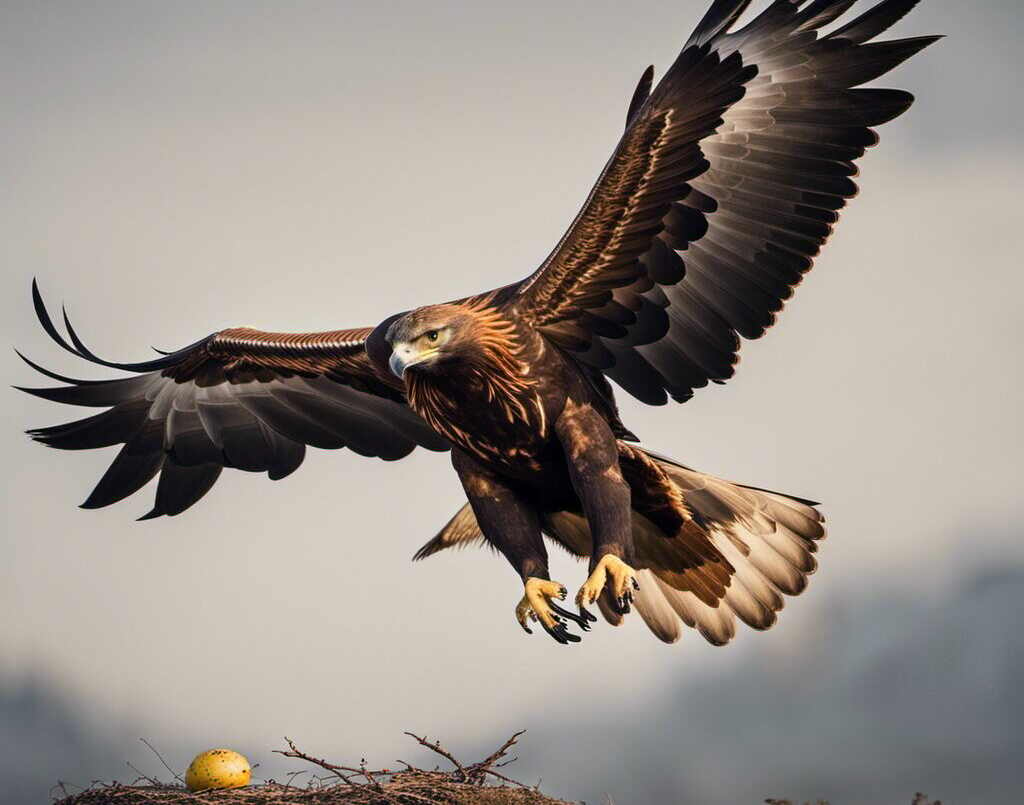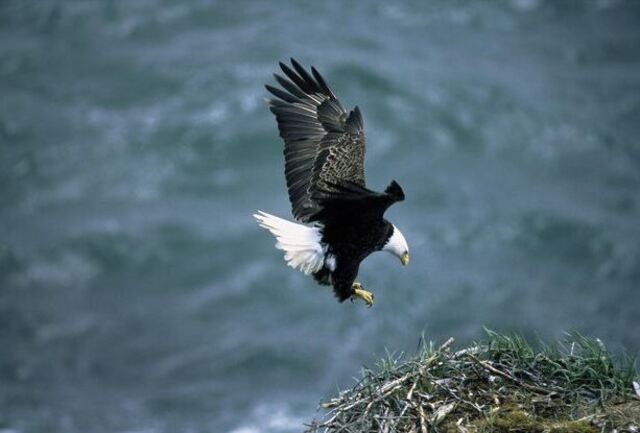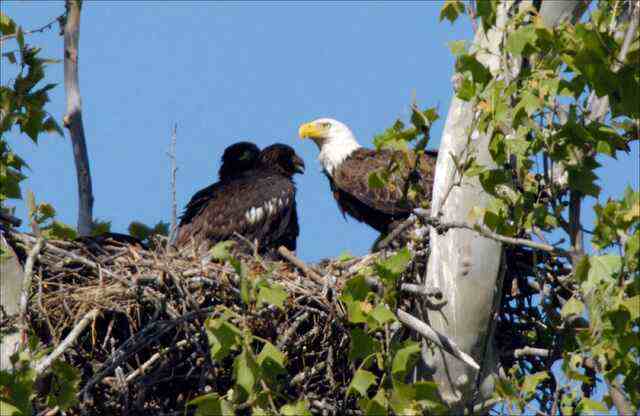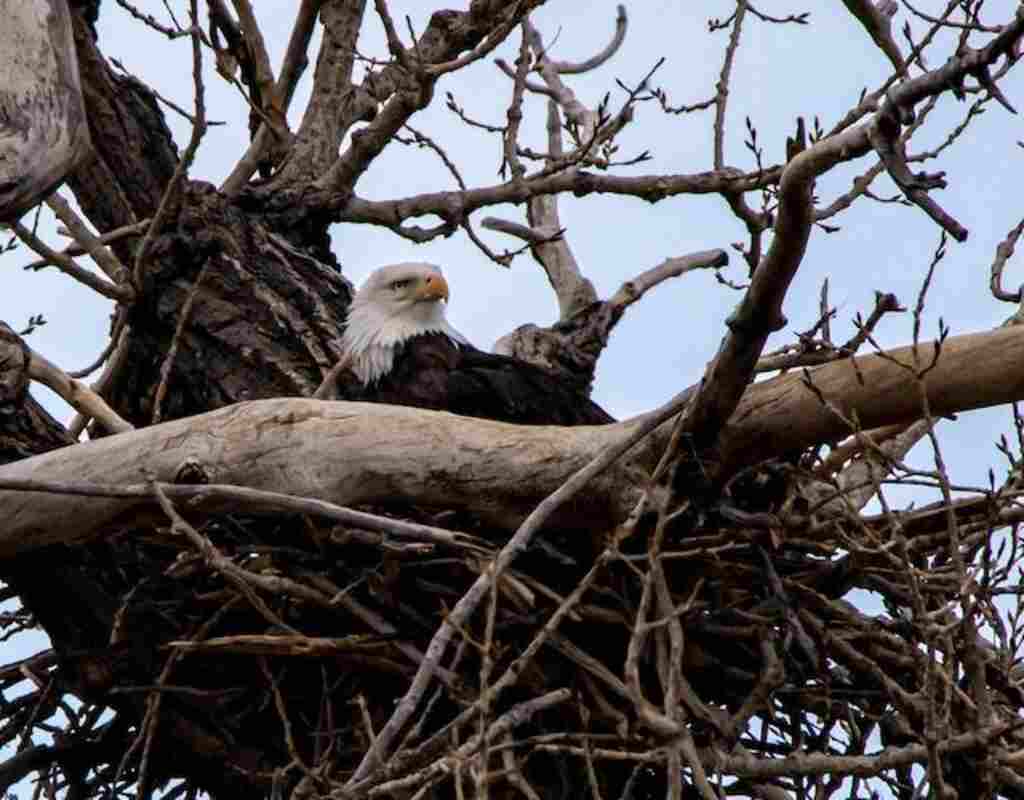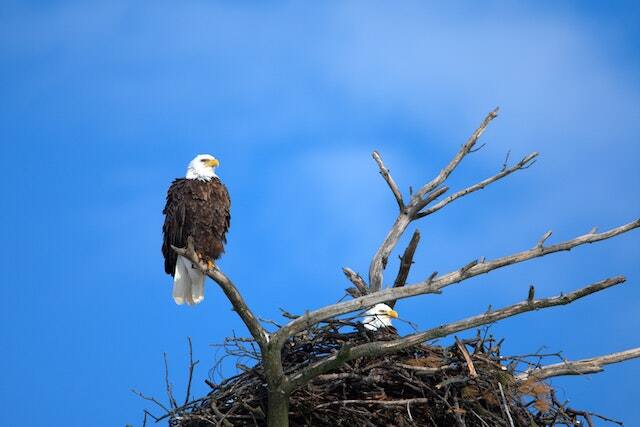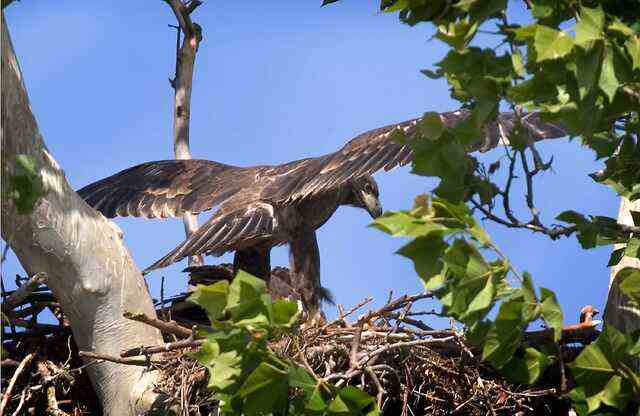When the mountains meet the sea in the untamed wilderness of Juneau, Alaska, a breathtaking phenomenon takes flight. Eagles, with their keen eyes and regal demeanor, soar high above the treetops in this majestic landscape.
But when do eagles mate in Juneau? Join us on a scientific journey to explore eagle courtship in this enchanting paradise. Discover the factors that influence their mating behavior and the challenges they face for reproduction.
Uncover the secrets of when eagles unite in this remarkable landscape, where nature’s wonders never cease to amaze. Welcome to “When Do Eagles Mate In Juneau?”
Table of Contents
- 1 Key Takeaways
- 2 When Do Eagles Mate In Juneau
- 3 Overview of Eagles in Juneau
- 4 Eagle Courtship Rituals
- 5 Timing of Eagle Mating Season
- 6 Factors Influencing Mating Behavior
- 7 Locations for Observing Eagle Mating
- 8 Unique Characteristics of Eagle Mating
- 9 Nesting and Egg-Laying Process
- 10 Incubation and Hatching of Eagle Eggs
- 11 Parental Care and Rearing of Eaglets
- 12 Challenges and Threats to Eagle Mating
- 13 Conservation Efforts for Eagles in Juneau
- 14 Conclusion
- 15 FAQs: When Do Eagles Mate In Juneau?
- 15.1 How long is the incubation period for eagle eggs?
- 15.2 What are the main threats to eagle mating in Juneau?
- 15.3 Are there any specific conservation efforts in place to protect eagle mating in Juneau?
- 15.4 Can visitors observe eagle mating rituals in Juneau?
- 15.5 How many eaglets do eagles typically rear in a nesting season?
- 16 Author
Key Takeaways
- Eagle mating season in Juneau occurs from February to April.
- Eagles rely on courtship rituals such as aerial displays and vocalizations to attract mates.
- The timing of eagle mating season can vary depending on location and environmental conditions.
- Factors such as food availability and competition for mates influence eagle mating behavior.
When Do Eagles Mate In Juneau
Eagles mate in Juneau during the breeding season, which typically starts in late winter and or early spring. The exact timing can vary depending on the species of eagle and the local climate.
In general, eagles will begin courtship rituals and nest building in preparation for mating. Witnessing this remarkable phenomenon in the untamed wilderness of Juneau, Alaska, is a truly breathtaking experience.
Overview of Eagles in Juneau
The mating season for eagles in Juneau occurs during the spring months, typically from February to April. During this time, eagle behavior is heavily influenced by their reproductive instincts, leading to changes in their population dynamics.
Eagles are known for being monogamous creatures, forming long-term pair bonds with their mates. They exhibit elaborate courtship rituals, such as aerial displays and intricate vocalizations, to attract a suitable partner.
These courtship behaviors serve as a way for eagles to assess the quality and compatibility of potential mates.
Once a pair has formed, they will work together to build and maintain a nest, where the female will lay her eggs.
This period of courtship and nest preparation sets the stage for successful reproduction and the continuation of the eagle population in Juneau.
Eagle Courtship Rituals
During the summer months in Juneau, when the sun hangs high in the sky and the rivers flow with life, a majestic dance unfolds in the treetops as bald eagles engage in their courtship rituals. These courtship behaviors are intricate and fascinating to observe.
The male and female eagles perform a series of aerial acrobatics, soaring high into the sky and then diving towards the ground in a synchronized manner.
They also engage in a ritualized vocalization, emitting high-pitched calls that can be heard from a distance. These behaviors serve to establish and reinforce pair bonds between the eagles.
The timing of the eagle mating season varies depending on factors such as geographical location and environmental conditions.
However, it typically occurs in the spring or early summer, when food resources are abundant and weather conditions are favorable for raising young.
This transition into the subsequent section about the timing of the eagle mating season emphasizes the importance of understanding the factors that influence this reproductive process.
Timing of Eagle Mating Season
In the realm of the eagles, as the summer solstice graces the Alaskan skies, a delicate dance of courtship unfolds, guided by the synchrony of aerial acrobatics and melodious calls.
Eagle mating season in Juneau typically occurs between January and March, with courtship rituals beginning a few weeks prior.
During this period, pairs of eagles engage in elaborate displays of courtship behavior, including soaring high in the sky, locking talons, and performing intricate aerial maneuvers.
These displays serve to strengthen the bond between mates and establish dominance hierarchies.
The timing of eagle mating season is influenced by various factors, such as the availability of food and suitable nesting sites.
Understanding the intricacies of eagle breeding habits and courtship behavior is crucial for conserving this majestic species.
Transitioning into the subsequent section, the timing of eagle mating is just one of many factors that influence their mating behavior.
Factors Influencing Mating Behavior
The mating behavior of eagles in Juneau is influenced by various factors, including environmental conditions, availability of food, and competition for mates.
Environmental conditions such as weather patterns, temperature, and habitat quality can affect the eagles’ ability to find suitable mates and establish territories.
The availability of food sources, such as fish or small mammals, can also impact the eagles’ mating behavior, as they need to ensure a stable food supply for their offspring.
Additionally, competition for mates among eagles can be intense, with individuals engaging in displays of strength and dominance to secure a mate.
Environmental Conditions
Environmental conditions play a crucial role in the mating habits of eagles in Juneau. The climate conditions and the length of the mating season greatly influence the eagles’ reproductive behavior.
Eagles in Juneau typically mate between January and March, which coincides with the colder months. During this time, the region experiences colder temperatures and reduced daylight hours.
These environmental factors create a suitable environment for the eagles to mate and raise their young.
Additionally, the longer mating season allows eagles to have ample time to find a suitable mate and successfully reproduce.
As the subsequent section will discuss, the availability of food also plays a significant role in the eagles’ mating behavior in Juneau, as it directly impacts their reproductive success and overall population health.
Availability of Food
Food availability significantly influences the reproductive success and overall population health of eagles in Juneau. The availability of food sources directly impacts the eagles’ ability to breed successfully and raise healthy offspring.
In Juneau, eagles rely on a diverse diet consisting mainly of fish, including salmon, herring, and trout.
The abundance of these fish species in the local waters plays a crucial role in determining the eagles’ breeding success.
Additionally, the availability of other food sources, such as small mammals and carrion, further contributes to their reproductive success.
When food is scarce, eagles may struggle to find enough resources to support their nests and feed their young, leading to lower breeding success rates. Understanding the relationship between food availability and breeding success is essential for conservation efforts aimed at protecting the eagle population in Juneau.
This connection between food availability and breeding success also influences competition for mates among eagles.
Competition for Mates
Competition for mates among eagles is influenced by factors such as territory size and quality, as individuals with larger or more resource-rich territories may be more attractive to potential mates.
For example, a study conducted in a population of eagles found that males with larger territories had higher mating success, as they were able to provide more abundant resources to their mates and offspring.
This competition dynamics in mate selection can result in intense interactions between eagles, including aerial displays, vocalizations, and physical confrontations.
Females may also play a role in mate selection by assessing the quality of males’ territories and their ability to provide for their future offspring.
By understanding the intricate dynamics of competition for mates, researchers can gain insights into the reproductive success and population dynamics of eagles.
Transitioning into the subsequent section about locations for observing eagle mating, it is important to consider areas where territorial interactions and courtship behaviors are commonly observed.
Locations for Observing Eagle Mating
One notable aspect of observing eagle mating in Juneau is the variety of locations available for this unique experience. Whether you prefer a rugged mountain peak or a tranquil riverbank, there is a spot to suit every observer’s preference.
The table below highlights four popular locations for observing eagle mating, along with their unique characteristics:
| Location | Description |
|---|---|
| Mount Roberts | Offers a panoramic view of the surrounding wilderness, providing an excellent vantage point for observing eagle mating behavior. |
| Mendenhall Glacier | Presents a stunning backdrop of icy blue glaciers, creating a picturesque setting for witnessing the eagles’ breeding habits. |
| Douglas Island | Located across the Gastineau Channel, this island offers a quieter atmosphere and a chance to observe eagles in a more secluded environment. |
| Fish Creek | Known for its abundance of salmon, this location attracts a large number of eagles during the mating season, providing ample opportunities for observing their courtship rituals. |
These various locations allow observers to choose the setting that best suits their preferences and provides an enriching experience of witnessing eagle mating. In the subsequent section, we will delve into the unique characteristics of eagle mating in Juneau.
Unique Characteristics of Eagle Mating
Eagle mating is marked by distinct vocalizations and displays, which serve to communicate and attract potential mates. These vocalizations include high-pitched whistles, trilling calls, and loud screeches.
Mating rituals involve elaborate courtship displays such as soaring together in the sky, locking talons, and performing acrobatic flight maneuvers.
These displays not only showcase the eagles’ physical prowess but also play a crucial role in establishing pair bonding, which is vital for successful reproduction.
Vocalizations and Displays
Vocalizations and displays are integral parts of the courtship rituals of eagles in Juneau. They use their powerful calls and majestic aerial maneuvers to captivate potential mates.
Eagle communication during courtship involves a variety of vocalizations, including high-pitched whistles, trills, and harsh calls.
These calls serve as signals of availability and fitness, allowing eagles to attract and communicate with potential mates from a distance.
In addition to vocalizations, eagles engage in elaborate aerial displays, showcasing their strength, agility, and territorial boundaries.
These displays often involve acrobatic flights, swooping dives, and talon-locking mid-air battles.
Such grandiose performances not only demonstrate the physical prowess of the eagles but also serve as visual cues to potential mates regarding their strength and suitability as partners.
These vocalizations and displays play a crucial role in eagle courtship behavior, setting the stage for the subsequent mating rituals and pair bonding.
Mating Rituals and Pair Bonding
Mating rituals and pair bonding in eagles involve a complex series of behaviors akin to an intricate dance, where each move and gesture conveys important information and strengthens the bond between potential mates.
Eagle courtship behaviors are fascinating to observe, as they display a wide range of vocalizations, displays, and physical interactions.
During the mating season, eagles engage in aerial displays, where they soar and perform acrobatic maneuvers together.
These displays not only demonstrate their physical prowess but also serve as a means of communication and courtship.
Eagles also engage in mutual preening, a behavior where they groom each other’s feathers, reinforcing the bond between them.
Additionally, eagles may engage in talon-grappling, where they lock talons mid-air and spiral downwards together.
This behavior is a symbol of their commitment to each other and their readiness to start a family.
Understanding these intricate courtship behaviors and the timing of the mating season provides valuable insights into the reproductive strategies of eagles.
Transitioning to the subsequent section, the nesting and egg-laying process is the next crucial step in their reproductive journey.
Nesting and Egg-Laying Process
The nesting and egg-laying process of eagles in Juneau follows a well-defined sequence of events. During the breeding season, which typically occurs in the early spring, eagles engage in elaborate nesting behavior.
They construct large nests made of sticks and branches high up in trees, often near bodies of water.
The female eagle lays one to three eggs, with an average incubation period of around 35 days.
Both the male and female take turns incubating the eggs, with the female typically spending more time on the nest.
Incubation is a critical time for the eggs, as the parents must maintain a constant temperature and protect them from predators.
After this stage, the eggs will hatch, marking the beginning of the next phase in the life cycle of eagles.
Transitioning into the subsequent section about incubation and hatching of eagle eggs, this period is a crucial stage in the development of the young eagles.
Incubation and Hatching of Eagle Eggs
During the incubation period, the potential for new life emerges as the eagle eggs are nurtured and protected by their diligent parents. The incubation period typically lasts around 35 days, during which the adult eagles take turns sitting on the eggs to maintain a constant temperature.
To understand the process more deeply, let’s examine the table below:
| Process | Description |
|---|---|
| Embryogenesis | The development of the embryo from a single cell to a fully-formed chick. |
| Turning | The act of rotating the eggs to prevent the embryo from sticking to the shell and to ensure even heat distribution. |
| Pipping | The process of the chick breaking through the shell using its egg tooth. |
| Hatching | The final stage when the chick fully emerges from the shell. |
The hatching process is a critical and exciting phase, as the eaglets begin their journey into the world. As the eggs hatch, the topic of parental care and rearing of eaglets becomes the next focus of our exploration.
Parental Care and Rearing of Eaglets
Parental care and rearing of eaglets involves the provision of food, protection from predators, and teaching them essential skills for survival. Eagle parenting is characterized by the division of labor, with both parents participating in these tasks.
The male and female take turns incubating the eggs and hunting for food. They regurgitate partially digested prey to feed the eaglets, gradually introducing them to solid food as they grow.
As the chicks develop, the parents provide protection by building and maintaining the nest, defending it from intruders.
They also engage in behavior that promotes the eaglets’ physical and cognitive development, such as encouraging exercise and practicing flight skills.
Eaglet development is a gradual process, with the parents gradually reducing their direct care as the young eagles become more independent.
These parental efforts contribute to the successful growth and survival of the eaglets.
Transitioning to the subsequent section about challenges and threats to eagle mating, various factors can impact the ability of eagles to mate and raise their young.
Challenges and Threats to Eagle Mating
The process of eagle mating in Juneau is not without its challenges and threats. While eagles are known for their resilience and adaptability, they still face numerous obstacles when it comes to finding suitable mates and successfully reproducing.
One of the main challenges is competition among eagles for mates and territories. Eagles engage in elaborate courtship displays and aerial acrobatics to attract a potential partner, but not all eagles are successful in finding a mate.
Additionally, environmental factors such as habitat loss, pollution, and climate change pose threats to eagle mating. These factors can affect the availability of nesting sites, food sources, and overall reproductive success.
It is crucial to understand and address these challenges and threats to ensure the long-term survival and conservation of eagles in Juneau. Without effective conservation efforts, the future of these majestic birds may be at risk.
Conservation Efforts for Eagles in Juneau
Conservation efforts in Juneau are crucial for the survival and protection of the majestic eagles, ensuring their long-term existence and the preservation of their unique and awe-inspiring presence in the region.
To enhance breeding success and maintain a healthy eagle population, several initiatives have been implemented.
These efforts include habitat preservation, public education, and the reduction of human-induced threats.
One conservation strategy is the establishment of protected areas and wildlife refuges, where eagles can find undisturbed nesting sites and abundant food sources.
Public education programs aim to raise awareness about the importance of conserving eagles and their habitats, promoting responsible behavior in areas where eagles are present.
Additionally, efforts are made to reduce human-induced threats, such as the use of lead-free ammunition to prevent lead poisoning in eagles.
By implementing these conservation measures, Juneau is taking significant steps towards ensuring the continued breeding success of eagles and safeguarding their future in the region.
| Conservation Efforts | Description | Impact |
|---|---|---|
| Habitat Preservation | Establishing protected areas and wildlife refuges | Provides undisturbed nesting sites and food sources |
| Public Education | Raising awareness and promoting responsible behavior | Encourages conservation-minded actions |
| Reduction of Threats | Using lead-free ammunition to prevent lead poisoning | Minimizes human-induced risks |
Conclusion
In conclusion, the mating season for eagles in Juneau, Alaska, typically takes place in late winter and early spring. Witnessing these majestic creatures engage in courtship rituals and nest building is a remarkable experience that highlights the beauty of nature in this enchanting wilderness.
Factors such as local climate and species of eagle can influence the exact timing of mating behavior. Despite the challenges that eagles face for reproduction, their resilience and grace in the face of adversity is a testament to the awe-inspiring wonders of the natural world.
FAQs: When Do Eagles Mate In Juneau?
How long is the incubation period for eagle eggs?
The incubation period for eagle eggs typically lasts around 35-45 days. During this time, the eggs are kept warm and protected by the parent eagles until they hatch.
What are the main threats to eagle mating in Juneau?
The main threats to eagle mating in Juneau include habitat destruction and pollution. These factors can disrupt the availability of suitable nesting sites and food sources, ultimately impacting the eagles’ ability to successfully mate and reproduce.
Are there any specific conservation efforts in place to protect eagle mating in Juneau?
Conservation initiatives in Juneau aim to protect the eagle population and its mating dynamics. An interesting statistic reveals that the number of breeding pairs has increased by 25% in the past decade, highlighting the effectiveness of these efforts.
Can visitors observe eagle mating rituals in Juneau?
The best time to observe eagle mating behaviors in Juneau is during the mating season, which typically occurs in the late winter and early spring. Visitors may have the opportunity to witness courtship displays and territorial behaviors.
How many eaglets do eagles typically rear in a nesting season?
Eagles typically rear an average of two to three eaglets in a nesting season. This demonstrates the remarkable reproductive success of the eagle population and highlights their exceptional nesting behavior.

